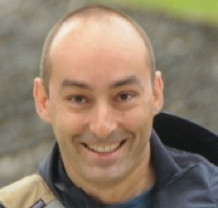On Friday 28 January, at 10:00, we will have the pleasure of hosting a series of 3 online seminars of 30 min + 10 min for questions each, given respectively by Ketty Beauvois (CEA), Stéphane Raymond (CEA) and Thomas Saerbeck (ILL) with the aim of showing/reminding us of the possibilities of measurements in terms of spin structure, spin textures and spin wave dynamics with neutrons – lines D10/D23, D17, IN12.
Place : Online
Skype link : https://webconf.cea.fr/ioan-lucian.prejbeanu/C89D5FFJ
10h00 – 10h40
Ketty Beauvois

Title: Resolving the magnetic structure in thin films by neutron diffraction
Abstract: Single-crystal neutron diffraction is a powerful tool in the determination of magnetic structures. The unique versatility of the D10 instrument at ILL allows to study bulk systems with low magnetic moments as well as thin films and superlattices thanks to the analyser option that allows to reduce the background. To illustrate this, I will present recent investigations of three different systems with an antiferromagnetic order. The first compound is a Cd-doped CeIrIn5 single crystal, CeIr(In0.9Cd0.1)5, belonging to the Ce-based heavy fermion family, for which the interplay between antiferromagnetism and unconventional superconductivity remains one of the key questions. Interestingly, we found a magnetic structure different from the closely related compound CeRhIn5 [1]. The second compound is a high quality expitaxial 62 nm thin film of MnPtGa. To my knowledge, for the first time, we have performed a quantitative analysis in a thin film directly from the neutron diffraction experiment and we found an interesting non colinear magnetic structure below 150 K, as reported for the polycrystalline compound [2]. This study with a thin film is crucial in order to project the scientific advances into technological applications. The last systems are antiferromagnetic metal oxide epitaxial thin films for application in spintronics. The role of orbital ordering to control the magnetism in epitaxial manganite thin films was demonstrated by combination of ab-initio calculations and magnetic measurements [3,4]. This control of the orbital ordering allows to fabricate artificial structures with antiferromagnetic ordering along the c axis (perpendicular to the substrate) of ferromagnetic monolayers with a quite high critical temperature. I will present preliminary results on firstly the pure ferromagnetic LaSrMnO3 film and then on the superlattice (La2/3Sr1/3MnO3)3(BaTiO3)3. [1] K. Beauvois, N. Qureshi, I. Sheikin et al. Phys. Rev. B. 101, 195146 (2020); [2] J. A. Cooley, J. D. Bocarsly, R. Seshadri et al. Phys. Rev. Mat. 4, 044405 (2020); [3] A. Sadoc, B. Mercey, C. Simon, M.-B. Lepetit et al. Phys. Rev. Lett. 104, 046804 (2010), [4] M.-B. Lepetit, B. Mercey, C. Simon. Phys. Rev. Lett. 108, 08702 (2012).
Bio: Dr. Ketty Beauvois is CEA researcher in the Magnetism and Neutron Diffraction group (MDN) of IRIG-MEM. After finishing her PhD thesis at the Institut Laue Langevin (ILL, Grenoble) on quantum fluids in 2016, she moved toward the study of the frustrated magnetism in single crystals and more recently towards the study of the magnetism in thin films using neutron scattering techniques. In parallel of her research activities, she has been co-responsible at the ILL of the D23 neutron diffractometer (CRG-CEA), and then D10 (ILL). Since December 2021, she took over the co-responsibility of the D23 instrument.
10h40 – 11h20
Stéphane Raymond

Title: Magnetic excitation spectrum of Mn5Si3
Abstract: The renewed interest for complex magnetic structures is motivated by the design of new functional materials based on the interplay between several degrees of freedom among charge, spin, orbital and lattice. In this context, Mn5Si3 has attracted a lot of attention in the past years for both its peculiar thermal and transport responses, namely its inverse magnetocaloric effect [1] and its anomalous Hall effect [2,3]. The spin dynamics of Mn5Si3 was investigated by inelastic neutron scattering on single crystal samples. The determination of the low energy spin-wave spectrum in the two antiferromagnetic AFM1 and AFM2 phases under magnetic field in conjunction with density functional theory calculations allows to get better microscopic insight into Mn5Si3 and its T-H phase diagram [4,5]. Furthermore, the study of higher energy spin dynamics ant its change between AFM1 and AFM2 under magnetic field provides insight into the mechanism of the inverse magnetocaloric effect [6]. A key feature to understand the physics of this system is the magnetic instability of Mn moments which can be tuned by temperature and magnetic field. [1] D. Songlin et al., J. Alloys Compd. 334 (2002) 249 ; [2] C. Sürgers et al., Sci. Rep. 7 (2017) 42982 ; [3] H. Reichlova et al., arXiv :2012.1565v1 ; [4] F.J. dos Santos, Phys. Rev. B 103 (2021) 024407 ; [5] N. Biniskos et al., arXiv:2112.03368v1 ; [6] N. Biniskos et al., Phys. Rev. Lett. 120 (2018) 257205.
Bio: Dr. Stéphane Raymond is CEA research director in the Magnetism and Neutron Diffraction group (MDN) of IRIG-MEM. He is responsible for the CEA of the neutron triple-axis spectrometer IN12 located at the Institut Laue Langevin, Grenoble. His research activities concern fundamental studies of the spin dynamics over a wide range of materials from strongly correlated electron systems (quantum phase transition, unconventional superconductivity) to functional magnetic materials (magnetocaloric materials) using neutron scattering techniques.
11h20 – 12h00
Thomas Saerbeck

Title: Resolving the magnetic structure across interfaces in functional heterostructures
Abstract: Neutron reflectometry has traditionally played a dominant role in the investigation of buried structures and interfaces, which are typically difficult to access by any other non-destructive technique. In particular, polarized neutron reflectometry (PNR) can resolve the magnetic moment configuration across individual layers and interfaces in heterostructures. Following a brief overview about the technique, I will present recent investigations illustrating the sensitivity of PNR to structural and magnetic ordering. The structural and chemical morphology of layers and interfaces is particularly important for engineering their properties and creating functional devices. An example are magnetic tunnel junctions (MTJ), produced at SPINTEC, for which annealing steps are necessary to maximize tunnel magnetoresistance and perpendicular anisotropy. High annealing temperatures are favorable leading to improved crystallization of the CoFeB ferromagnetic layers and the MgO barrier, but can be detrimental to the layer structure due to enhanced diffusion [1]. Here, we study W diffusion barriers as a method to stabilize the MTJ’s layer structure and compare the diffusion processes to conventional structures [1]. We use co-refinement of polarized neutron and x-ray reflectometry (XRR) to elucidate the layer composition, magnetism and interface structure as a function of annealing temperature in thin layers below nanometer length scales. Proximity effects and exchange coupling are two driving mechanisms for new physics and functional behavior in modern spintronic devices. The recently observed interlayer exchange coupling in all-oxide-based synthetic antiferromagnets promises a new route to spintronic devices due to the high tunability related to lattice, orbital, spin and charge degrees of freedom. PNR aided in identifying distinct magnetic configurations of the multilayer stack during the feature rich magnetization reversal as a function of external field [2]. The data shows not only the transition from homogeneous magnetization to antiferromagnetic alignment, but also reveals the switching process through a magnetic soliton propagation. Finally, I will present an outlook on how PNR can be used to quantify periodic lateral magnetic domain patterns designed for lab-on-a-chip applications on micrometer length scales [3]. [1] J. Chatterjee et al., Appl. Phys. Lett. 110, 202401 (2017) ; [2] K. Zhang et al. ACS Appl. Mater. & Interfaces 13, 20788 (2021) ; [3] T. Saerbeck et al. Nanomaterials 10, 752 (2020).
Bio: Dr. Thomas Saerbeck is a research scientist and instrument responsible at the neutron research reactor Institut Laue-Langevin (ILL) in Grenoble, France. He received his PhD in Physics in 2012 from the University of Western Australia in a joint project with the Australian Nuclear Science and Technology Organisation. He completed a 2-year post-doctoral fellowship at the University of California San Diego, US, in the Center of Advanced Nanoscience in 2014 and joined the Department of Physics and Astronomy within the KU Leuven, Belgium as visiting professor for 3 months in 2017. Thomas’s research interests focus on magnetic exchange phenomena and proximity effects in hybrid systems in form of thin film nanostructures and patterns. He uses neutron and synchrotron scattering techniques, among others, to investigate novel phenomena and physical properties arising from close contact of dissimilar materials.




